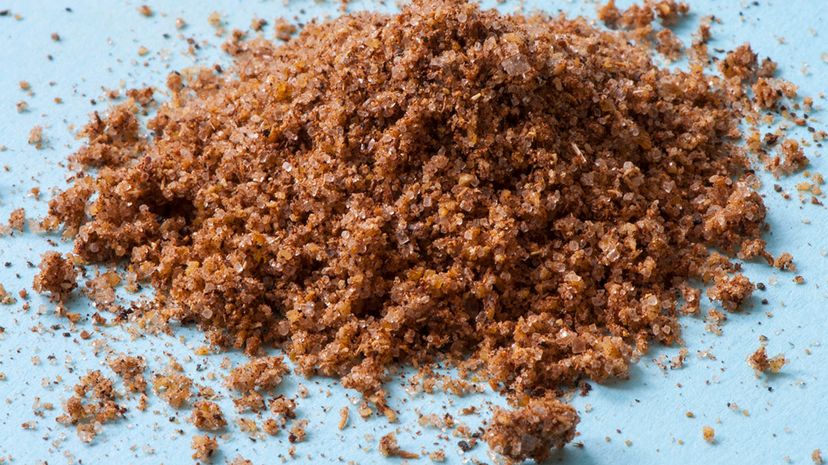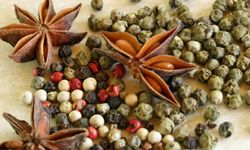
It's easy to take Chinese five-spice powder for granted. You might even wonder if it's culturally authentic. But not only is this curious spice blend an important part of China's culinary tradition, it's an attempt to balance the crucial five flavors identified in Chinese culture.
The spice blend itself is far from set in stone. You'll frequently find five-spice powder that contains cinnamon, star anise, cloves, fennel and Sichuan peppercorns — but the specific ingredients vary. They don't even have to total five! That's because it's less a matter of combining five sources of flavor, but rather the creation of a spice blend that provides a balance of the five flavors themselves: bitter, sweet, spicy, sour and pungent.
Advertisement
According to chef and "Stir Crazy" author Ching He Huang, these flavors are crucial for balanced dishes in Chinese cuisine — and their use is more complex than a Western-branded bottle of five-spice powder might suggest.
"Sometimes the West confuses Chinese five spice with allspice, which can contain liquorice, nutmeg and black pepper," Huang says. "The spices in Chinese five spice (separately and sometimes together, whole) are used in numerous dishes from stir fries to braised and stewed dishes — a wide range of recipes. Whereas the West often uses it just in powder form and just for marinading."
In her own cooking, Huang uses the powder for a variety of casseroles, spice rubs, marinades, roasts, stocks and soy-braised dishes. While she admits that store-bought five spice works perfectly well, she prefers to mix it herself.
"I make my own with equal quantities of Sichuan pepper, star anise, cinnamon, fennel and cloves," Huang says. First dry toast it, place it in a spice grinder and grind it till it's very fine. You can use a fine sieve to make sure there are no grittier, larger pieces." She says she also sometimes adds nutmeg.
Huang also points to the deeper understanding of the five flavors, one based in traditional Chinese medicine (TCM)'s deep history of herbal medicine and body energy manipulation. According to Beijing University of Chinese medicine professor Dang Ye, the five flavors ensure proper organ function and overall health in TCM. The various ingredients in five-spice powder factor into other herbal medicine traditions as well, though Western medical evidence tends toward the inconclusive.
The doctrine of five flavors became established in China around the fourth century B.C.E. — and tradition places its origin in the ancient, myth-shrouded Xia dynasty of the second millennium B.C.E. Whatever its exact origins, the concept proved pervasive enough to influence realms outside of medicine and cuisine — including philosophical discourse.
As philosophy professor Spencer Wertz discusses in his book "Food and Philosophy: Selected Essays," the ancient philosopher Laozi claimed the five flavors cause men to not taste at all. While this would seem counterintuitive to many modern readers, the Taoism founder's point was that if you use any sense to its fullest, you dull its ability. Other Taoist thinkers made a point of championing the simple tastes of foods like rice and congee — tastes that are arguably annihilated by intense spices.
Laozi's lesson on overindulgence is obvious, but other Chinese philosophers saw the value in a perfect balance of the five flavors. As Wertz points out, a simple bowl of soup served as a potent political metaphor in the fourth-century B.C.E. text "Zuo zhuan." A harmony of spices in the soup, it was said, would result in both a harmonious flavor and a harmonious mind.
Of course, you don't have to risk political unrest or sensory decadence in your use of five-spice powder. The next time you reach for it, however, take a moment to consider the millennia's worth of tradition embodied in that tiny bottle of balanced flavor.
Advertisement


